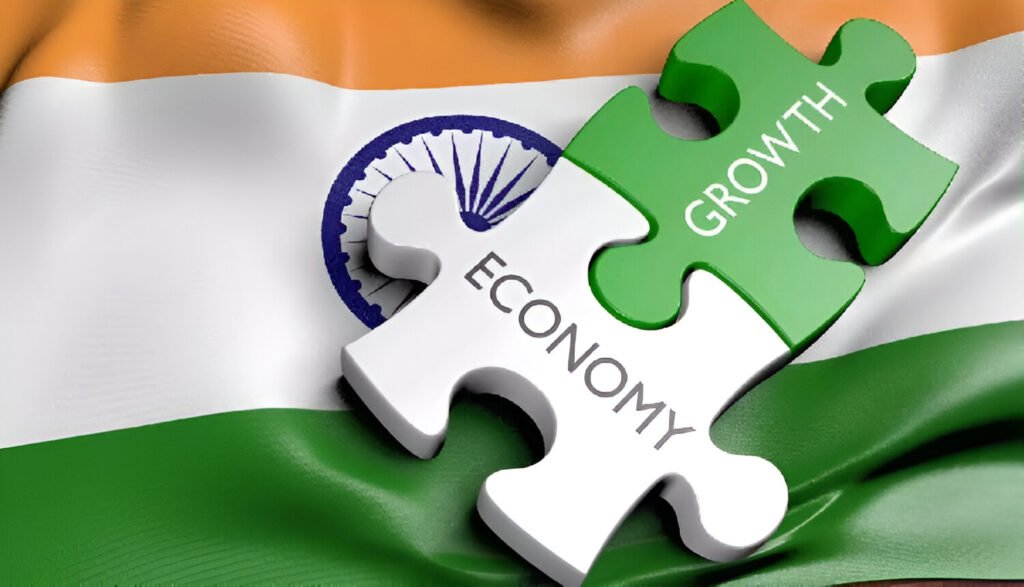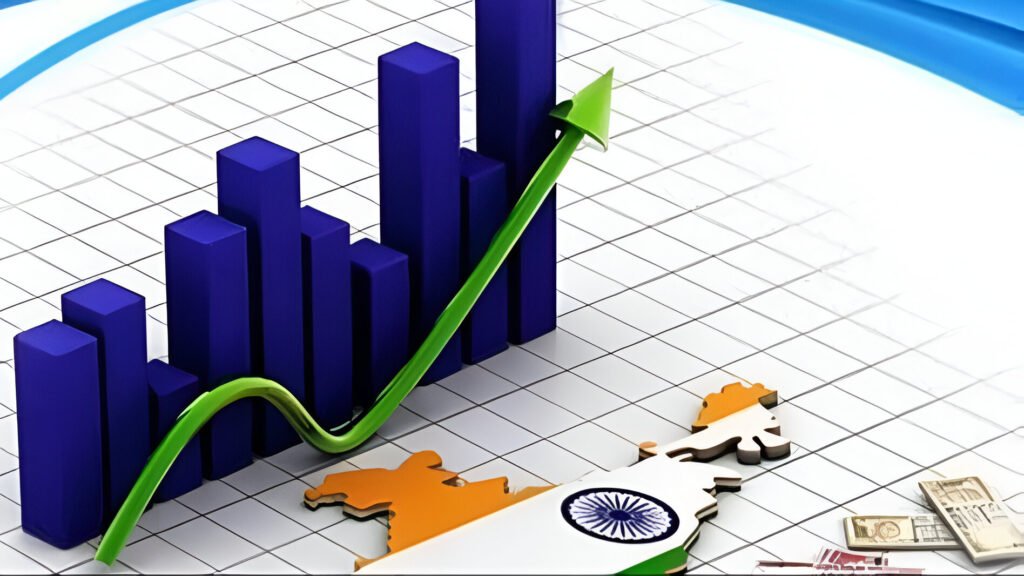
India, the world’s most populous nation, is now preparing to achieve one more milestone, becoming the world’s fourth-largest economy. The International Monetary Fund (IMF) has predicted that India will surpass Japan in nominal GDP in 2025. This will be an economic milestone in history that indicates how much India has progressed over the last few decades.
India’s estimated GDP in 2025 stands at approximately $4.187 trillion, whereas Japan’s GDP is likely to be $4.186 trillion. Although the difference appears negligible, the significance is enormous. This transformation represents not only figures but also the transfer of power and possibility from traditional economies to emerging economies such as India.
What’s Driving India’s Growth?
India’s rise in the economic ranks is no accident. It’s been building up gradually for a number of significant reasons:
1. Young and Large Population
India boasts a population advantage with a massive segment of its population under the age of 35. This youthful population is a robust workforce that can drive long-run economic productivity.
2. Increased Consumption
Private spending, particularly in rural India, is contributing enormously. Individuals are using their money for day-to-day expenditures, education, healthcare, and even recreation. This domestic demand keeps the nation’s economy going even amidst international recessions.
3. Stable Government Policies
Economic reforms, digitalization, and pro-business policies initiated by the government in the past decade have had a profound effect. Campaigns such as ‘Make in India,’ UPI, and Digital India are generating employment opportunities, enhancing infrastructure, and boosting innovation.
4. Global Investment
Foreign investors are increasingly keen on investing in Indian markets, particularly in technologies, renewable energy, manufacturing, and fintech.
Why is Japan Falling Behind?
Whereas India is on the rise, Japan appears to be falling a bit behind. Here’s how Japan, formerly the second-largest economy, will fall behind:
1. Aging Population
Japan boasts one of the world’s oldest populations. With fewer younger people entering the workforce, productivity is decreasing.
2. Economic Recession
Japan is already technically in recession, which implies its economy has contracted for at least two consecutive quarters. This indicates poorer demand, lower investment, and decreased confidence from businesses.
3. Gradual Growth in Innovation
Japan formerly dominated in electronics and car sectors but has failed to catch up with new technologies such as AI, cloud computing, and fintech, where India and other countries are presently leading.

What Does This Mean for the Average Indian?
It is easy for many of us to question, How does this growth affect you and me?
Improved Job Opportunities: With an expanding economy, there is an increase in businesses opening up, thereby creating more jobs in industries such as IT, healthcare, education, construction, and tourism.
Increased Global Presence: India’s role in worldwide issues such as trade, climate change, and global diplomacy will increase.
Increased Infrastructure Investments: Improved roads, online services, renewable energy, and public transport will enhance living standards.
Rise of Indian Brands: Indian businesses will feel more comfortable going out, and “Made in India” will become a powerful brand globally.
What’s Next? India Can Be the 3rd Largest by 2028
The IMF also forecasts that India can surpass Germany by 2028 to become the third-largest economy, after the US and China. This is turning into a reality more and more due to sustained reforms, tech expansion, and entrepreneurship driven by youth.
This can also imply
Increased foreign direct investment (FDI)
A larger position in global groups such as G20, BRICS, and WTO
India is turning into a manufacturing hub rather than merely a services provider.
Challenges India Still Needs to Address
Despite all this advancement, India still has a number of challenges:
Unemployment: Numerous individuals, particularly youth, are still having a hard time getting the right jobs.
Income Inequality: The wealthy continue to get richer, while too many poor households continue to survive without basic essentials.
Environmental Problems: Pollution, deforestation, and global warming may impact long-term sustainability.
Education & Skills Gap: India needs to ensure quality education and skill development according to future requirements of jobs.
Conclusion: A Proud But Humble Moment
India’s story of growth is not about being the 4th or 3rd largest economy. It’s about how millions of Indians have toiled hard, from farmers and educators to engineers and entrepreneurs, to make a better world for themselves. This achievement should make us proud, but also remind us that we still have a long way to go.
Now is the time to invest in people, protect our environment, and build a fair and inclusive economy. If done right, India’s best days are not just near; they are inevitable.









